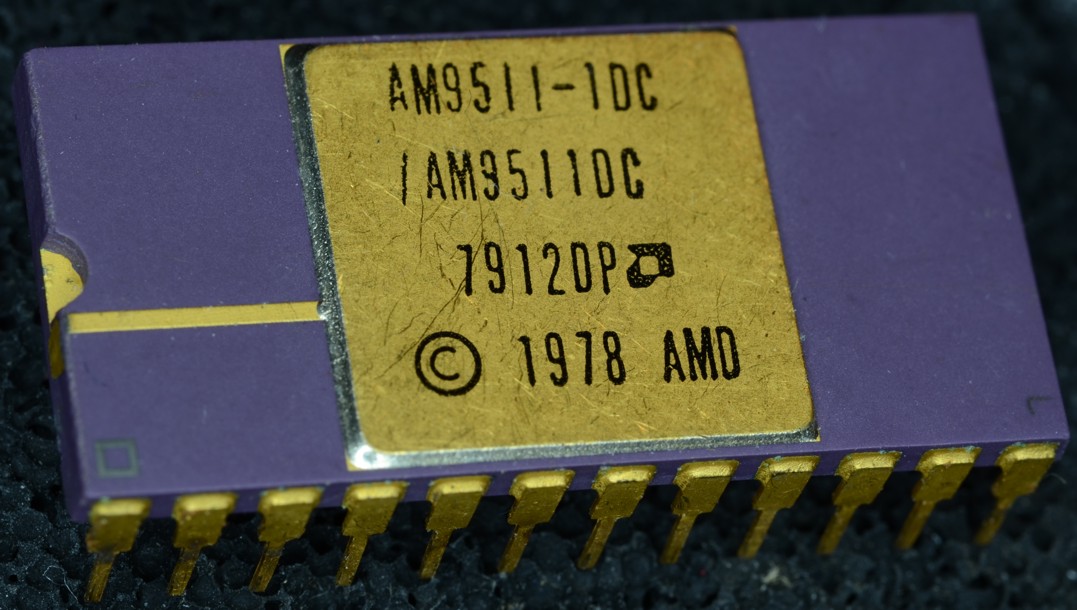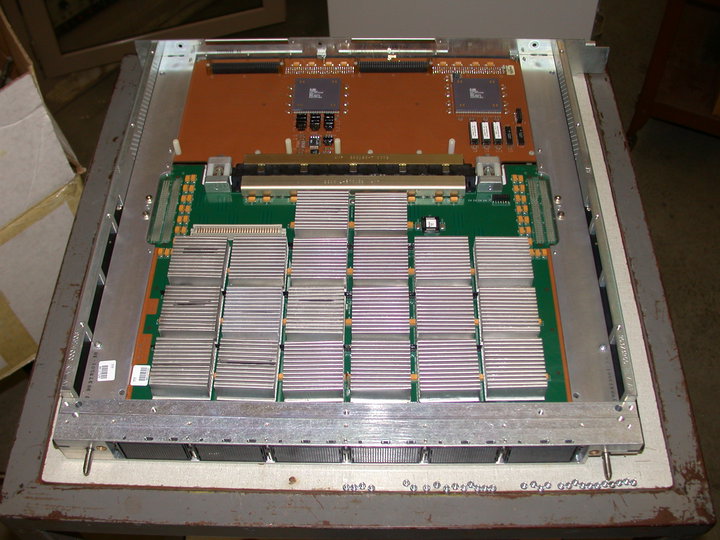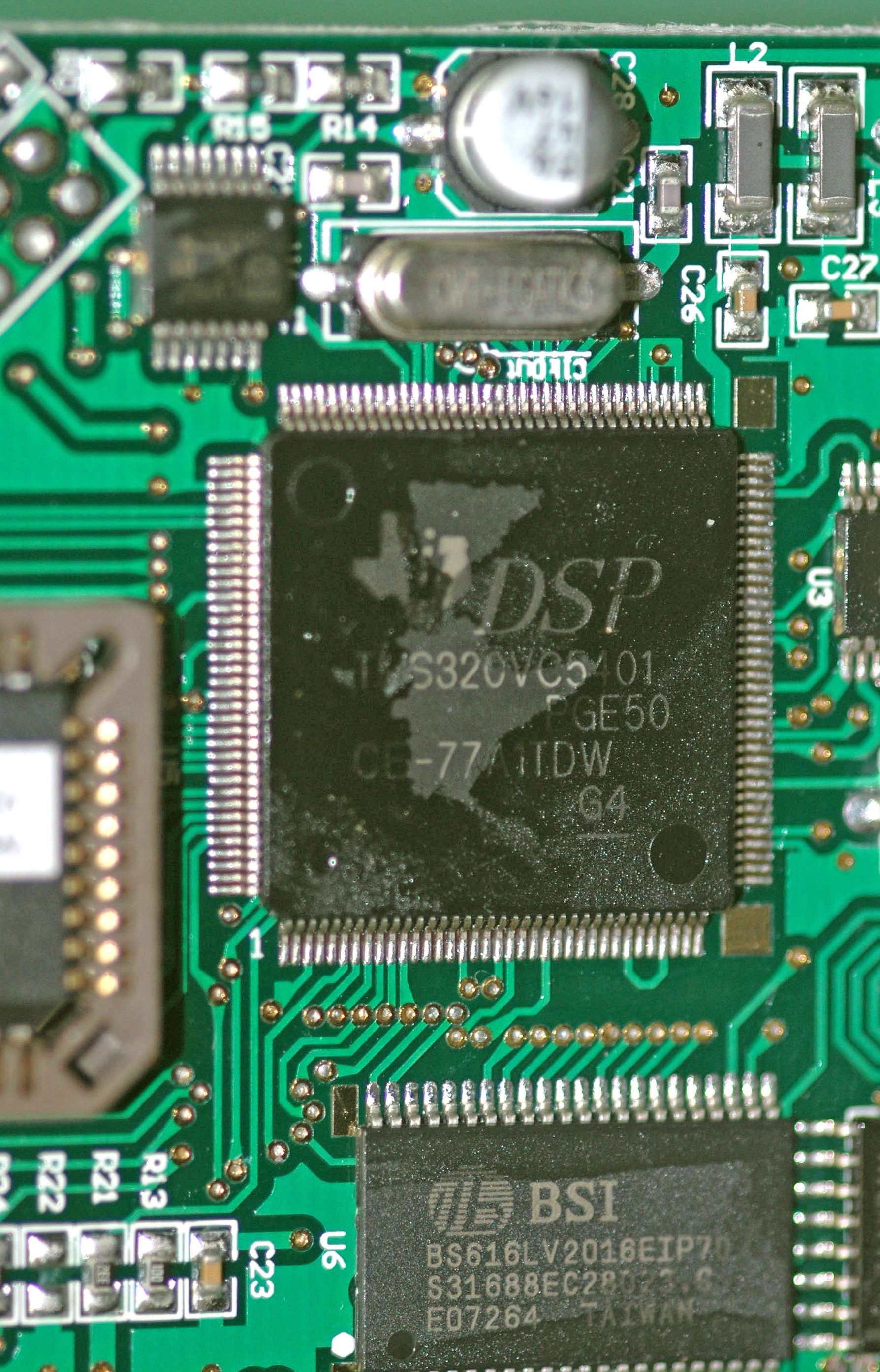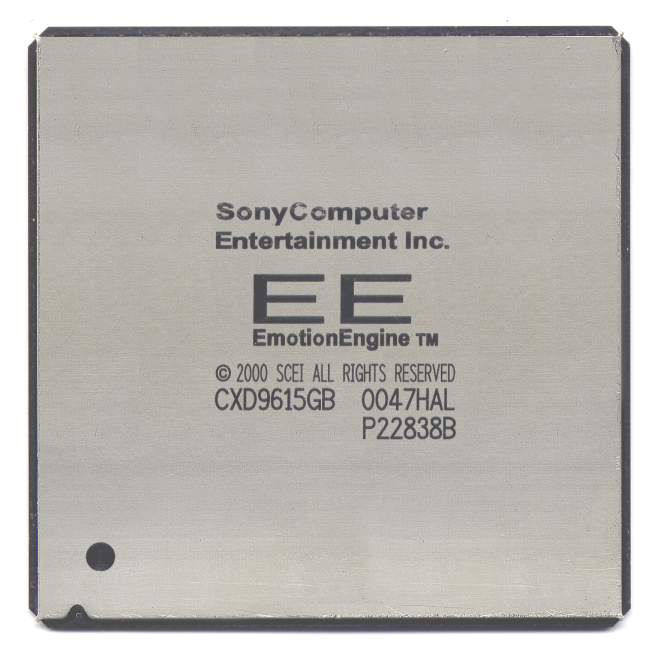|
Coprocessors
A coprocessor is a computer processor used to supplement the functions of the primary processor (the CPU). Operations performed by the coprocessor may be floating-point arithmetic, graphics, signal processing, string processing, cryptography or I/O interfacing with peripheral devices. By offloading processor-intensive tasks from the main processor, coprocessors can accelerate system performance. Coprocessors allow a line of computers to be customized, so that customers who do not need the extra performance do not need to pay for it. Functionality Coprocessors vary in their degree of autonomy. Some (such as FPUs) rely on direct control via coprocessor instructions, embedded in the CPU's instruction stream. Others are independent processors in their own right, capable of working asynchronously; they are still not optimized for general-purpose code, or they are incapable of it due to a limited instruction set focused on accelerating specific tasks. It is common for these to be dr ... [...More Info...] [...Related Items...] OR: [Wikipedia] [Google] [Baidu] |
Motorola 68881
The Motorola 68881 and Motorola 68882 are floating-point units (FPUs) used in some computer systems in conjunction with Motorola's 32-bit 68020 or 68030 microprocessors. These coprocessors are external chips, designed before floating point math became standard on CPUs. The Motorola 68881 was introduced in 1984. The 68882 is a higher performance version produced later. Overview The 68020 and 68030 CPUs were designed with the separate 68881 chip in mind. Their instruction sets reserved the "F-line" instructions – that is, all opcodes beginning with the hexadecimal digit "F" could either be forwarded to an external coprocessor or be used as "traps" which would throw an exception, handing control to the computer's operating system. If an FPU is not present in the system, the OS would then either call an FPU emulator to execute the instruction's equivalent using 68020 integer-based software code, return an error to the program, terminate the program, or crash and require a rebo ... [...More Info...] [...Related Items...] OR: [Wikipedia] [Google] [Baidu] |
Intel 8087
The Intel 8087, announced in 1980, was the first x87 floating-point coprocessor for the 8086 line of microprocessors. The purpose of the 8087 was to speed up computations for floating-point arithmetic, such as addition, subtraction, multiplication, division, and square root. It also computed transcendental functions such as exponential, logarithmic or trigonometric calculations, and besides floating-point it could also operate on large binary and decimal integers. The performance enhancements were from approximately 20% to over 500%, depending on the specific application. The 8087 could perform about 50,000 FLOPS using around 2.4 watts. Only arithmetic operations benefited from installation of an 8087; computers used only with such applications as word processing, for example, would not benefit from the extra expense (around $150) and power consumption of an 8087. The 8087 was an advanced IC for its time, pushing the limits of manufacturing technology of the period. Ini ... [...More Info...] [...Related Items...] OR: [Wikipedia] [Google] [Baidu] |
Intel 8231/8232
The Intel 8231 and 8232 were early designs of floating-point maths coprocessors (FPUs), marketed for use with their i8080 line of primary CPUs. They were licensed versions of AMD's Am9511 and Am9512 FPUs, from 1977 and 1979, themselves claimed by AMD as the world's first single-chip FPU solutions. Adoption Whilst the i8231/i8232 (and their AMD-branded cousins) were primarily intended to partner the i8080 (or the AMD clone Am9080), the multiple interface options in their design, from simple wait state insertion and status polling routines to interrupt and DMA controller driven methods suitable for a peripheral processor or add-in board, meant that – with a small amount of glue logic – it was usable in almost any microprocessor system that had a DMA subsystem or a spare interrupt input/ interrupt vector available, and AMD's original documentation provided several different examples. This was a valuable feature for one of the first commercially available single-chip FPUs, g ... [...More Info...] [...Related Items...] OR: [Wikipedia] [Google] [Baidu] |
Intel 8231/8232
The Intel 8231 and 8232 were early designs of floating-point maths coprocessors (FPUs), marketed for use with their i8080 line of primary CPUs. They were licensed versions of AMD's Am9511 and Am9512 FPUs, from 1977 and 1979, themselves claimed by AMD as the world's first single-chip FPU solutions. Adoption Whilst the i8231/i8232 (and their AMD-branded cousins) were primarily intended to partner the i8080 (or the AMD clone Am9080), the multiple interface options in their design, from simple wait state insertion and status polling routines to interrupt and DMA controller driven methods suitable for a peripheral processor or add-in board, meant that – with a small amount of glue logic – it was usable in almost any microprocessor system that had a DMA subsystem or a spare interrupt input/ interrupt vector available, and AMD's original documentation provided several different examples. This was a valuable feature for one of the first commercially available single-chip FPUs, g ... [...More Info...] [...Related Items...] OR: [Wikipedia] [Google] [Baidu] |
Cryptographic Accelerator
In computing, a cryptographic accelerator is a co-processor designed specifically to perform computationally intensive cryptographic operations, doing so far more efficiently than the general-purpose CPU. Because many servers' system load consists mostly of cryptographic operations, this can greatly increase performance. Intel's AES-NI is by far the most common cryptographic accelerator in commodity hardware. VIA PadLock is another recent example. Operating system support Several operating systems provide some support for cryptographic hardware. The BSD family of systems has the OpenBSD Cryptographic Framework (OCF), Linux systems have the Crypto API, Solaris OS has the Solaris Cryptographic Framework (SCF) and Microsoft Windows has the Microsoft CryptoAPI. Some cryptographic accelerators offer new machine instructions and can therefore be used directly by programs. Libraries such as OpenSSL and LibreSSL support some such cryptographic accelerators. Almost all Unix-like ... [...More Info...] [...Related Items...] OR: [Wikipedia] [Google] [Baidu] |
Vector Processor
In computing, a vector processor or array processor is a central processing unit (CPU) that implements an instruction set where its instructions are designed to operate efficiently and effectively on large one-dimensional arrays of data called ''vectors''. This is in contrast to scalar processors, whose instructions operate on single data items only, and in contrast to some of those same scalar processors having additional single instruction, multiple data (SIMD) or SWAR Arithmetic Units. Vector processors can greatly improve performance on certain workloads, notably numerical simulation and similar tasks. Vector processing techniques also operate in video-game console hardware and in graphics accelerators. Vector machines appeared in the early 1970s and dominated supercomputer design through the 1970s into the 1990s, notably the various Cray platforms. The rapid fall in the price-to-performance ratio of conventional microprocessor designs led to a decline in vector sup ... [...More Info...] [...Related Items...] OR: [Wikipedia] [Google] [Baidu] |
Digital Signal Processor
A digital signal processor (DSP) is a specialized microprocessor chip, with its architecture optimized for the operational needs of digital signal processing. DSPs are fabricated on MOS integrated circuit chips. They are widely used in audio signal processing, telecommunications, digital image processing, radar, sonar and speech recognition systems, and in common consumer electronic devices such as mobile phones, disk drives and high-definition television (HDTV) products. The goal of a DSP is usually to measure, filter or compress continuous real-world analog signals. Most general-purpose microprocessors can also execute digital signal processing algorithms successfully, but may not be able to keep up with such processing continuously in real-time. Also, dedicated DSPs usually have better power efficiency, thus they are more suitable in portable devices such as mobile phones because of power consumption constraints. DSPs often use special memory architectures that ... [...More Info...] [...Related Items...] OR: [Wikipedia] [Google] [Baidu] |
PlayStation 2
The PlayStation 2 (PS2) is a home video game console developed and marketed by Sony Computer Entertainment. It was first released in Japan on 4 March 2000, in North America on 26 October 2000, in Europe on 24 November 2000, and in Australia on 30 November 2000. It is the successor to the original PlayStation (console), PlayStation, as well as the second installment in the PlayStation brand of consoles. As a sixth generation of video game consoles, sixth-generation console, it competed with Nintendo's GameCube, and Microsoft's Xbox (console), Xbox. It is the List of best-selling game consoles, best-selling video game console of all time, having sold over 155 million units worldwide. Announced in 1999, Sony began developing the console after the immense success of its predecessor. The PS2 offered Backward compatibility, backward-compatibility for its predecessor's DualShock#DualShock, DualShock controller, as well as its games. The PlayStation 2 received widespread critical accla ... [...More Info...] [...Related Items...] OR: [Wikipedia] [Google] [Baidu] |
Weitek
Weitek Corporation was an American chip-design company that originally focused on floating-point units for a number of commercial CPU designs. During the early to mid-1980s, Weitek designs could be found powering a number of high-end designs and parallel-processing supercomputers. Weitek started in 1981, when several Intel engineers left to form their own company. Weitek developed math coprocessors for several systems, including those based on the Motorola 68000 family, the 1064 and 1164, and for Intel-based i286 systems, the 1067. Intel's own FPU design for the i386 fell far behind in development, and Weitek delivered the 1167 for them. The Weitek 1167 Floating Point Coprocessor provided the combination of Weitek 1163, 1164 and 1165 chipset. Later upgrades to this design led to the 2167, 3167 and 4167. Weitek would later outfit FPUs to the early SPARC architecture such as the 3170 and 3172. Weitek FPUs had several differences compared to x87 offerings, lacking extended do ... [...More Info...] [...Related Items...] OR: [Wikipedia] [Google] [Baidu] |
Computer-aided Design
Computer-aided design (CAD) is the use of computers (or ) to aid in the creation, modification, analysis, or optimization of a design. This software is used to increase the productivity of the designer, improve the quality of design, improve communications through documentation, and to create a database for manufacturing. Designs made through CAD software are helpful in protecting products and inventions when used in patent applications. CAD output is often in the form of electronic files for print, machining, or other manufacturing operations. The terms computer-aided drafting (CAD) and computer aided design and drafting (CADD) are also used. Its use in designing electronic systems is known as ''electronic design automation'' (''EDA''). In mechanical design it is known as ''mechanical design automation'' (''MDA''), which includes the process of creating a technical drawing with the use of computer software. CAD software for mechanical design uses either vector-based graph ... [...More Info...] [...Related Items...] OR: [Wikipedia] [Google] [Baidu] |
Floating-point
In computing, floating-point arithmetic (FP) is arithmetic that represents real numbers approximately, using an integer with a fixed precision, called the significand, scaled by an integer exponent of a fixed base. For example, 12.345 can be represented as a base-ten floating-point number: 12.345 = \underbrace_\text \times \underbrace_\text\!\!\!\!\!\!^ In practice, most floating-point systems use base two, though base ten ( decimal floating point) is also common. The term ''floating point'' refers to the fact that the number's radix point can "float" anywhere to the left, right, or between the significant digits of the number. This position is indicated by the exponent, so floating point can be considered a form of scientific notation. A floating-point system can be used to represent, with a fixed number of digits, numbers of very different orders of magnitude — such as the number of meters between galaxies or between protons in an atom. For this reason, floating-p ... [...More Info...] [...Related Items...] OR: [Wikipedia] [Google] [Baidu] |
Desktop Computer
A desktop computer (often abbreviated desktop) is a personal computer designed for regular use at a single location on or near a desk due to its size and power requirements. The most common configuration has a case that houses the power supply, motherboard (a printed circuit board with a microprocessor as the central processing unit, memory, bus, certain peripherals and other electronic components), disk storage (usually one or more hard disk drives, solid state drives, optical disc drives, and in early models a floppy disk drive); a keyboard and mouse for input; and a computer monitor, speakers, and, often, a printer for output. The case may be oriented horizontally or vertically and placed either underneath, beside, or on top of a desk. Personal computers with their cases oriented vertically are referred to as towers. As the majority of cases offered since the mid-1990s are in this form factor, the term ''desktop'' has been retronymically used to refer to modern case ... [...More Info...] [...Related Items...] OR: [Wikipedia] [Google] [Baidu] |






